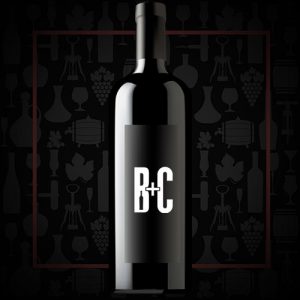Cellar Profile
In the mid 1700s, Bernardin Charrère moved from the Haute Savoie in Southeast France to the Aosta Valley and established Les Crêtes, a mill and farm in Aymavilles. This was in the middle of the 21 square mile Aosta Valley, in the heart of the wine region. In 1810, the family planted 2 hectares of vinifera grapes and the winery was born. The family still continues to craft wines from those vineyards to this day. Les Crêtes is the largest privately-owned winery in the region, but would be considered “boutique” in most other regions around the world. It has been at the forefront of searching out rare, indigenous vinifera varieties and helping protect them from extinction. Grapes like Prie Rouge, Mayolet, Cornalin, Premetta and Fumin exist nowhere else in the world and Les Crêtes, along with the rest of the tiny vignerons in the region, has worked with the Italian government to preserve them. This is one of the most challenging regions on earth to work for wine, with non-contiguous vineyards frequently planted on ledges on the side of steep Alpine mountains where they can find a little sandy soil. Hot summer days and extremely cool nights, coupled with a dry growing season allow for some of the longest hang times on earth. Les Crêtes has consistently been recognized as the finest producer in the region and a destination spot for wine lovers. Their wines are powerful, yet elegant, with their trademark salty minerality – a true representation of the terroir of the Val d’Aosta.
Region
Surrounded by the Alps, the Valle d’Aosta is home to the highest elevated vineyards in all of Europe. The region is divided into three main vineyard areas: the upper valley,Valdigne; the central valley; and the lower valley. Most vineyards in the Aosta Valley occupy the steep, south-facing slopes above the Dora Baltea river, a tributary of the Po. The dramatic topography and diminutive size of the valley mean that the area available for viticulture is limited. Much of the valley floor, with its mineral-rich, well-watered soils, is simply too fertile for quality viticulture. As a result, many of the best vineyards here are on the lower slopes, and climb steadily up the slopes to top altitudes of around 1300m above sea level.
Vineyard
Torette is a sub-zone of the Valle d’Aosta and is the largest of the seven sub-regions of the DOC, covering the steep slopes of the Dora Baltea river valley between Arriver and the city of Aosta. The central part of the Valle d’Aosta, where the Toroth vineyard area lies, is oriented east to west and vineyards can be found stretching up the sides of the surrounding mountains to altitudes of around 800m above sea level. Trained in the French Guyot method, the vines are, on average, 30 years old.
Varieties
Petit Rouge is a dark-skinned grape variety grown in the Valle d’Aosta. It is the region’s most widely-planted red wine grape and is used to make tart, fruity reds which are often compared to Beaujolais. The Petit Rouge vine can be identified by the small “dusty” coloured grapes that, according to wine expert Jancis Robinson, can almost look gray. During the growing season, the variety is late ripening and is often harvested with low levels of acidity. This is one reason why it is often blended where it can improve the color of the usually light-colored Valle d’Aosta wines while adding floral notes to the bouquet.
Winemaking
Manual harvesting in the middle of October. Grapes are gently pressed and fermented for 8 days in temperature-controlled steel at 28°C with daily pump-overs. The wine is then aged for a further eight months in steel, followed by five months in bottle.
Tasting Notes
Intense ruby red with violet hues. The nose is floral and fruity with noted of violets, roses and morello cherries. The palate is full of ripe red fruit and inherent dusty tannins. The finish long with fresh, mouth watering acidity.

 info@buyersandcellars.ca
www.buyersandcellars.ca
info@buyersandcellars.ca
www.buyersandcellars.ca